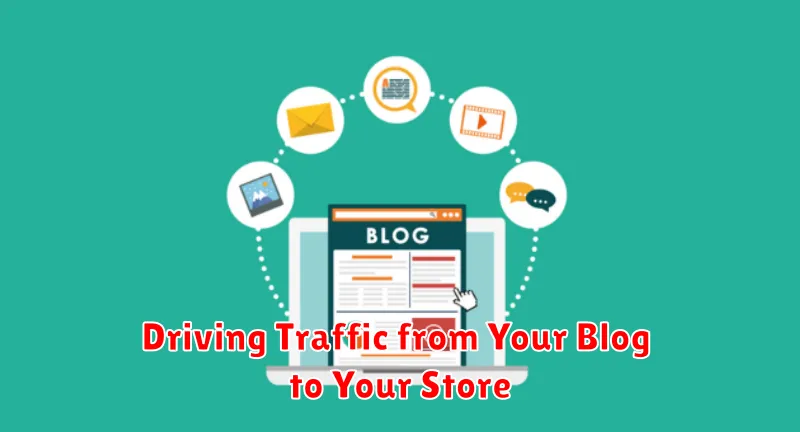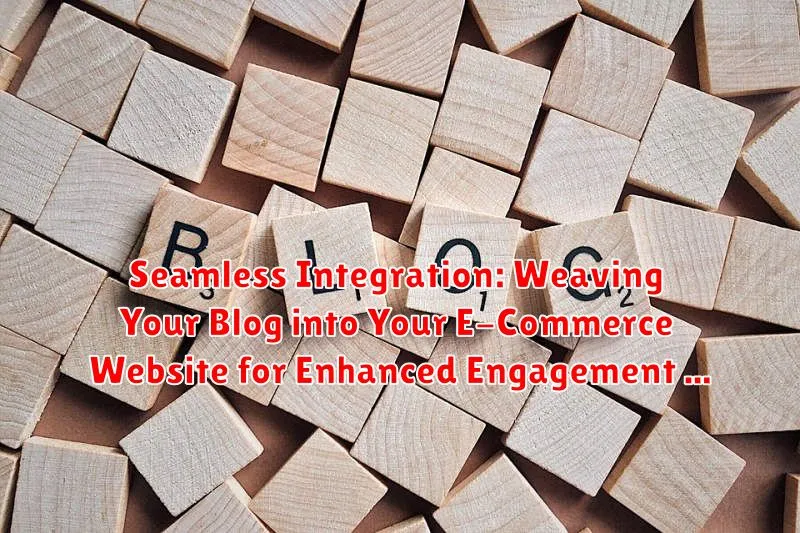In today’s competitive digital landscape, a seamless integration between your blog and e-commerce website is more crucial than ever for enhanced engagement. This synergy allows you to cultivate a thriving online community, transform casual browsers into loyal customers, and ultimately boost your bottom line. By strategically weaving valuable content into your online store, you can establish your brand as an authority in your niche, nurture trust with your audience, and drive e-commerce success. This article explores the undeniable benefits of integrating your blog with your e-commerce website and provides actionable strategies to achieve a seamless integration that fosters enhanced engagement and maximizes conversions.
Discover how a well-integrated blog can serve as a powerful engine for e-commerce growth. We’ll delve into the key principles of effective content creation, explore best practices for seamless integration, and demonstrate how this strategy can elevate your e-commerce website beyond a simple storefront. Learn how to leverage your blog to enhance customer experience, boost SEO rankings, drive traffic, and generate leads, all while fostering enhanced engagement and building a loyal customer base.
The Power of Blogging for E-Commerce Success
In today’s competitive digital landscape, a well-integrated blog can be a powerful engine for e-commerce growth. It’s more than just posting articles; it’s about building a community and fostering genuine connections with your target audience.
Blogging provides a platform to offer valuable content that goes beyond product descriptions. By sharing informative and engaging posts, you establish yourself as an authority in your niche, building trust and credibility with potential customers.
This increased trust translates to higher conversion rates. Educated customers are more likely to make informed purchasing decisions, leading to improved sales and customer loyalty. Moreover, consistent blogging boosts your SEO performance, driving organic traffic to your e-commerce store.
Consider blogging as a long-term investment in your brand’s online presence. It’s a sustainable strategy that contributes to a stronger brand identity and drives lasting business success.
Choosing the Right Blogging Platform for Integration
Selecting the right blogging platform is crucial for seamless integration with your e-commerce website. A poorly integrated blog can create a disjointed user experience, hindering engagement rather than boosting it. Consider these key factors when making your decision.
Ease of Integration: Some platforms offer built-in integrations with popular e-commerce platforms, simplifying the setup process. Look for plugins or APIs that allow seamless data transfer and a unified user experience.
Customization Options: Your blog should visually align with your online store’s branding. Choose a platform that provides ample customization options for themes, layouts, and design elements to maintain a consistent brand identity.
SEO Friendliness: A blog’s success hinges on its visibility in search engine results. Platforms with robust SEO features, such as customizable URLs and meta descriptions, are essential for driving organic traffic.
Content Management Capabilities: Efficient content creation and management tools simplify the blogging process. Look for platforms with user-friendly interfaces, scheduling features, and media management capabilities.
Technical Aspects of Integrating a Blog
Integrating a blog seamlessly into your e-commerce platform involves key technical considerations. Choosing the right integration method is crucial. A subdomain (blog.yourstore.com) offers simplicity, while a subdirectory (yourstore.com/blog) can boost SEO. WordPress, a popular blogging platform, offers plugins facilitating integration with various e-commerce platforms.
API integration allows for dynamic content sharing and a unified user experience. Ensure your blog’s design aligns with your e-commerce website for consistent branding. Consider using the same fonts, colors, and navigation elements. Mobile responsiveness is also vital, ensuring a seamless browsing experience across all devices.
Performance optimization is paramount. A fast-loading blog enhances user experience and SEO. Minimize large image files and leverage caching techniques.
Content Strategy for E-Commerce Blogs
A well-defined content strategy is crucial for driving results with your e-commerce blog. Focus on creating valuable, engaging content that caters to your target audience’s interests and needs.
Product-focused content can highlight specific items, showcasing their features and benefits. Consider creating tutorials, reviews, or comparison guides.
User-generated content, such as customer testimonials and reviews, builds trust and social proof. Encourage customers to share their experiences with your products.
Educational content positions your brand as an authority in your niche. This can include blog posts about industry trends, tips and tricks, or how-to guides related to your products.
Promotional content, while necessary, should be used sparingly. Focus on providing value rather than constantly pushing sales. Subtly weave in promotions or discounts within valuable content to avoid alienating your audience.
Driving Traffic from Your Blog to Your Store

A well-integrated blog acts as a powerful magnet, drawing potential customers to your e-commerce store. Strategic implementation is key to converting blog readers into paying customers.
Internal linking is crucial. Weave relevant links within your blog posts that direct readers to product pages within your store. For example, a blog post about the benefits of organic cotton could link directly to your organic cotton bedding collection.
Clear calls to action (CTAs) encourage readers to take the next step. End your blog posts with compelling CTAs, such as “Shop the Collection Now” or “Explore Our Organic Cotton Range.” These CTAs should be visually prominent and easy to click.
Promote your latest blog posts across your social media channels. Sharing snippets and compelling visuals can entice followers to click through and read more, ultimately leading them to your store.
Consider incorporating product showcases within your blog posts. If you’re writing about sustainable fashion, for example, showcasing a few key sustainable pieces from your store within the blog post itself can pique reader interest and facilitate direct purchases.
Measuring the ROI of Your Blog Integration
Accurately measuring the return on investment (ROI) of your blog integration requires a strategic approach. It’s not just about page views; it’s about understanding how your blog contributes to your bottom line. Key performance indicators (KPIs) are crucial for this assessment.
Track metrics like conversion rates from blog readers to customers. How many visitors who read a blog post ultimately make a purchase? Analyze referral traffic from your blog to product pages. This indicates how effectively your blog content is driving customers to your products.
Attribution modeling is essential to understand the customer journey. A customer might not buy immediately after reading a blog post. They might return later through a different channel. By correctly attributing conversions, you can accurately assess the long-term value of your blog.
Finally, consider the time saved by your customer support team. Does your blog answer common customer questions, reducing the need for support interactions? Quantifying this can reveal a significant, albeit less direct, ROI from your blog.
SEO Best Practices for E-Commerce Blogs
Optimizing your e-commerce blog for search engines is crucial for driving organic traffic and increasing visibility. Follow these key SEO practices to maximize your blog’s reach.
Keyword Research: Identify relevant keywords that potential customers use when searching for products or information related to your industry. Integrate these keywords naturally within your blog content, including titles, headings, and body text.
On-Page Optimization: Optimize each blog post for specific target keywords. Use descriptive title tags and meta descriptions. Structure your content with clear headings (H2, H3, etc.) Ensure your website is mobile-friendly and loads quickly.
Content Quality: Publish high-quality, informative, and engaging content that provides value to your readers. Focus on creating original content that addresses customer needs and pain points.
Internal Linking: Link internally to relevant product pages within your blog posts. This helps improve site navigation and can boost product visibility.
Building a Community through Your Blog

Your blog isn’t just a platform for content; it’s a powerful tool for fostering a thriving community around your brand. By engaging with your audience authentically, you can cultivate loyalty and turn casual shoppers into brand advocates.
Encourage interaction by posing questions at the end of your posts. Ask for opinions, feedback, and personal experiences related to the topic. Respond thoughtfully to comments to demonstrate that you value your readers’ input.
Run contests and giveaways related to your products or industry. This generates excitement and encourages sharing, expanding your reach and attracting new potential customers.
Highlight user-generated content. Feature customer testimonials, reviews, or photos related to your products. This not only builds trust but also makes your audience feel valued and seen.

